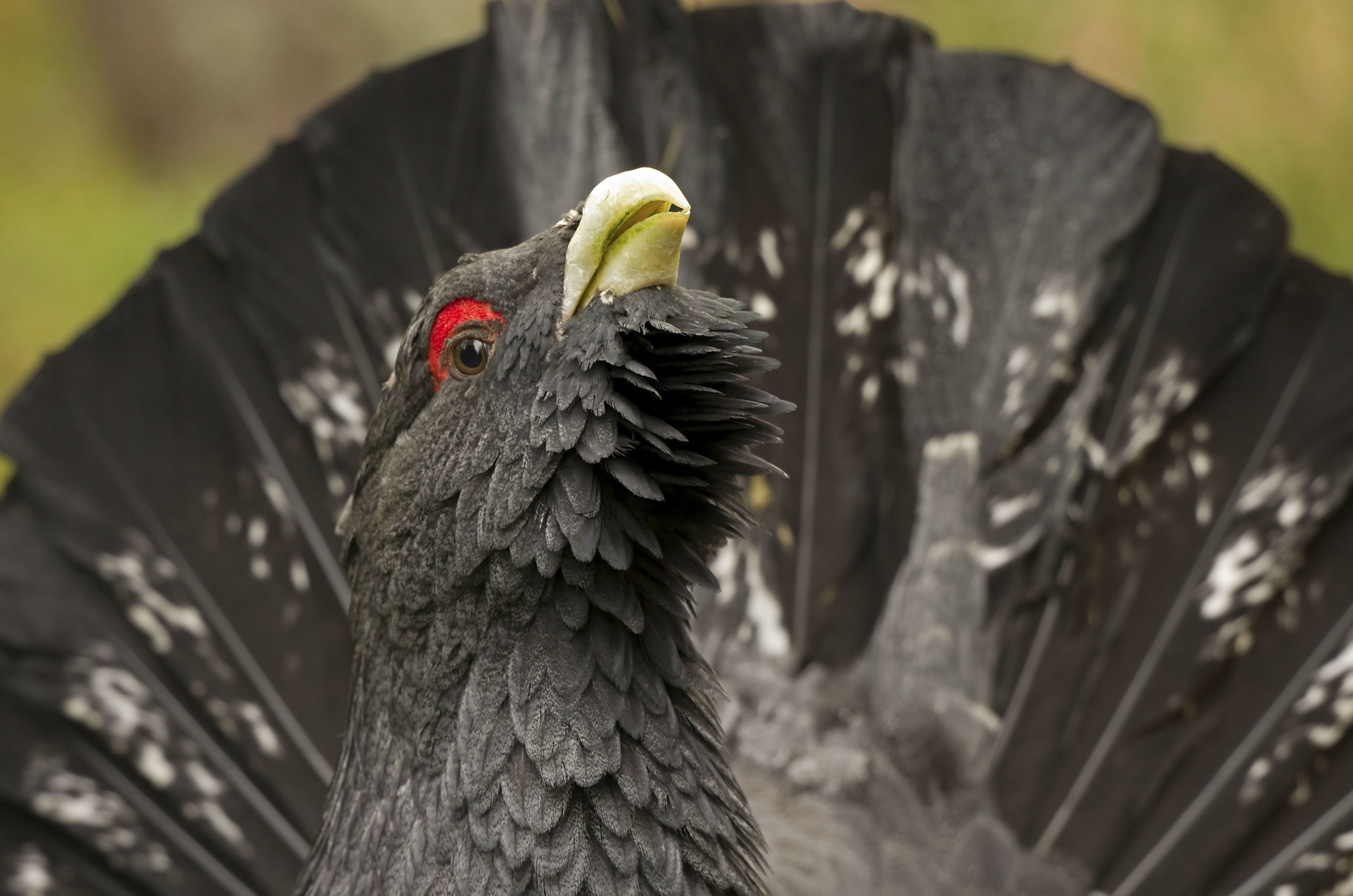
THE latest national survey of Scotland’s population of capercaillie, the world’s largest grouse, estimates there to be only 1114 individuals – making it one of the country’s most endangered birds.
Scotland’s capercaillie population is assessed every six years by RSPB Scotland and Scottish Natural Heritage (SNH) with the most recent survey conducted during winter 2015/16.
Between November and March, RSPB surveyors walked nearly one thousand miles of transects looking for and recording the birds. The previous survey was carried out in winter 2009/10 and put capercaillie numbers at around 1285 individuals.
Capercaillie are found in mature pine woodlands in parts of the Highlands, Moray, Aberdeenshire and Perthshire, but Strathspey holds around 83% of the remaining population.
An innovative five year initiative, the Cairngorms Capercaillie Project, is being developed to help the bird. Spearheaded by the Cairngorms Nature Partnership, the scheme will work closely with communities to build support for the conservation of capercaillie, as well as aiming to create bigger, better managed and better connected forests to support long-term survival of capercaillie and other species in pine woods.
Key to its success will be partnerships with National Park communities; local residents will help the project team design sensible approaches to improve recreational opportunities for locals and visitors while reducing disturbance of capercaillie.
Andy Ford, Cairngorms Nature Manager said: “People are key to securing the future of capercaillie in the National Park. We want to empower people to be inspired to get involved.”
Conservation scientists have identified the main reasons for the current status of capercaillie as relatively low levels of breeding success and an increase in deaths from collisions with deer fences. The latter can be reduced by marking fences, decreasing their height or removing them, however resolving the former is more complex.
Breeding success is adversely affected by high rainfall in June, when the chicks hatch, and predation. The number of chicks capercaillie raise is only relatively high when both of these factors are low but, unfortunately, wetter summers have become more frequent and the small size and fragmented nature of the forests these birds inhabit allow easier access to predators.
There is also growing evidence that human disturbance can be an issue as it causes capercaillie to avoid using large areas of otherwise suitable woodland – limiting the potential for population recovery.
Sue Haysom, Policy and Advice Officer with Scottish Natural Heritage (SNH), said: “Vital conservation work such as establishing rich feeding areas for adults and chicks, promoting woodland creation in the right locations to increase habitat, and carrying out targeted predator control around breeding sites has already brought benefits. Now we need to build on this with energy and innovative approaches developed by experts and local communities to ensure that future generations can experience this magnificent bird.”
Despite their size capercaillie are fairly elusive, often sitting quietly in pine trees or on the forest floor. In spring, however, they can be seen gathering at communal ‘leks’ where the males go to ‘strut their stuff’ in the hopes of attracting a mate. The males have an amazing song they use at leks which is a series of ‘cliks’ ending in a loud ‘pop’; they are also very aggressive towards rival birds and fighting at leks is common.

Enjoy the convenience of having The Sunday Post delivered as a digital ePaper straight to your smartphone, tablet or computer.
Subscribe for only £5.49 a month and enjoy all the benefits of the printed paper as a digital replica.
Subscribe